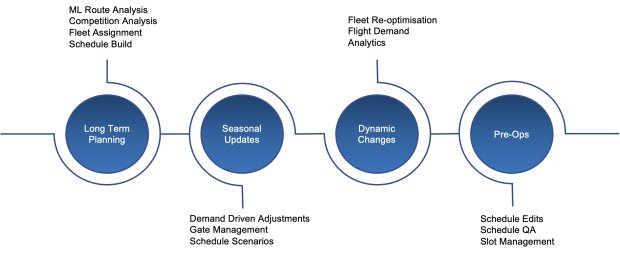Airline Forecasting is Hard - Is there a Better Way?

“Predicting is difficult, especially about the Future”
Whether you attribute this bit of wisdom and humor to the Danish physicist Niels Bohr or to the NY Yankee baseball great Yogi Berra, airline network planners are among the first to agree that it’s true. But, why is forecasting difficult? What are the weak points where planners would like to have faster and better ways to do things?
Getting a precise forecast seems like it would lead to good network decisions. But some real issues are the high cost of getting good data, the dependence on high-cost calibration, and real specialist expertise needed to interpret the results. Additionally, there are a few parameters, such as new market stimulation where judgment calls need to be made. Guessing this wrong will have an outsized impact on a forecast. Another is the use of average fares which can totally miss the impact of elasticity in a market. A third is the assumption that the current capacity for competitors will remain the same for the period. This can cause a major deviation from the forecast in just a few weeks. With all these issues working against it, how confident can we be in decisions based on old, traditional forecasting methods?
But, are decision-focused AI tools any better at this? And, what does decision-focused mean?
By itself, a forecast has little value unless you have a decision to make. That sounds obvious, but it is amazing how much time and money is spent doing detailed forecasting work before it is clear what decision options need to be compared. A lot of problems could be solved much faster and more cheaply by first creating distinct options, then designing a level of analysis that is sufficient to confidently make a clear choice.
- The analysis can sometimes be fairly simple. It may use information that a forecast does not use. For example, making close-in schedule adjustments for the available fleet can be made pretty quickly by pulling current booking and revenue data from your PSS or RM system into your scheduling system instead of running a complex forecast model.
- To compare new routes, an AI model can compare multiple alternatives using various types of data such as demographics, economic trends, major events, competitive intensity, etc. to select the most promising routes to launch or where to add capacity.
- For alternative network scenarios, the analysis could use both historic flight data and competitor capacity trends in a machine learning model to compare the potential profitability and competitive risk. You can also use optimization tools with this type of analysis to find the best scenario for the network.
The key to each of the examples is that the decision situation is clearly framed first, then the relevant decision support tools are used with the right types of data relevant to the decision. The benefits for network planners and schedulers are the ease of use of these AI tools and clarity to make the choices faster and with more confidence.
If you are dealing with these types of decisions in your planning, let us show you how Zulu’s AI decision support tools could save you time and improve schedule profitability. Contact us.




